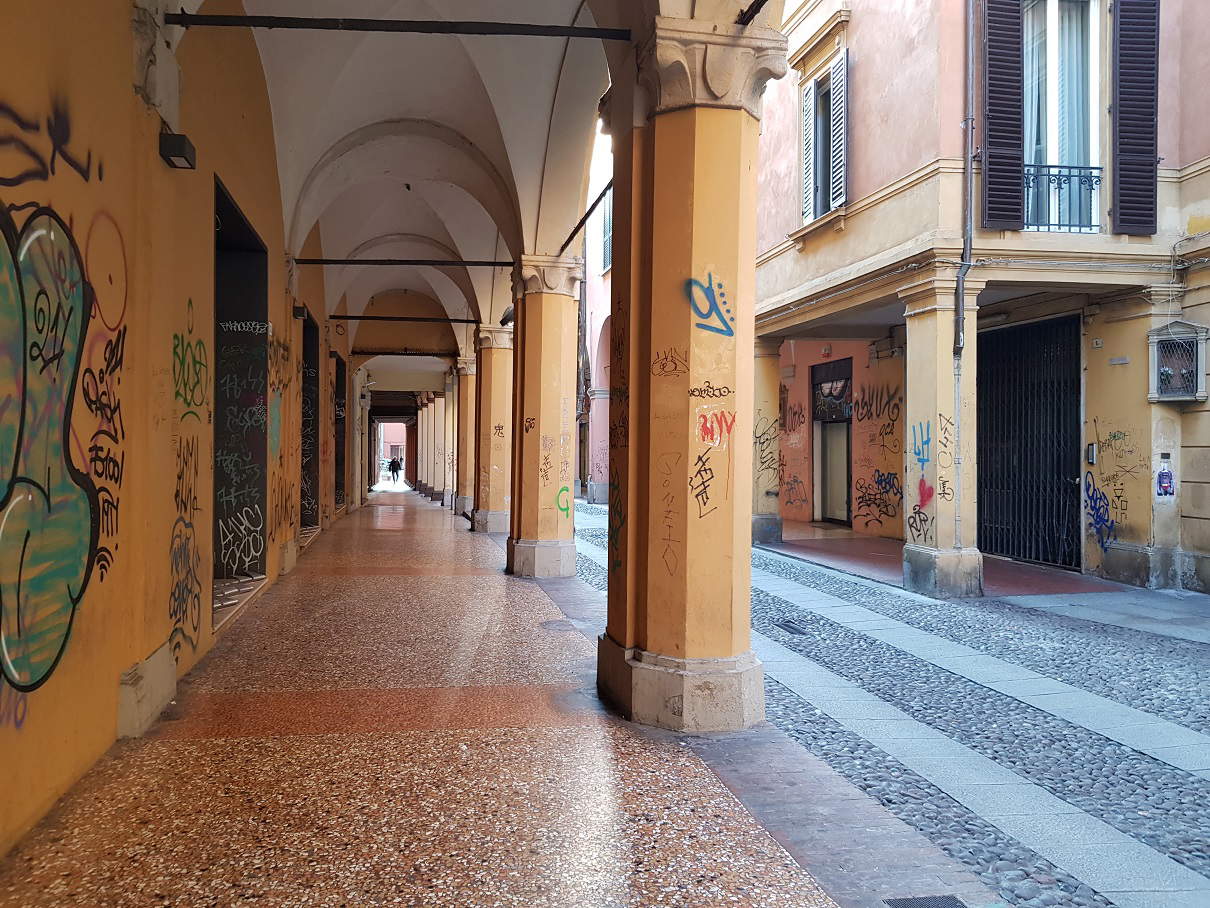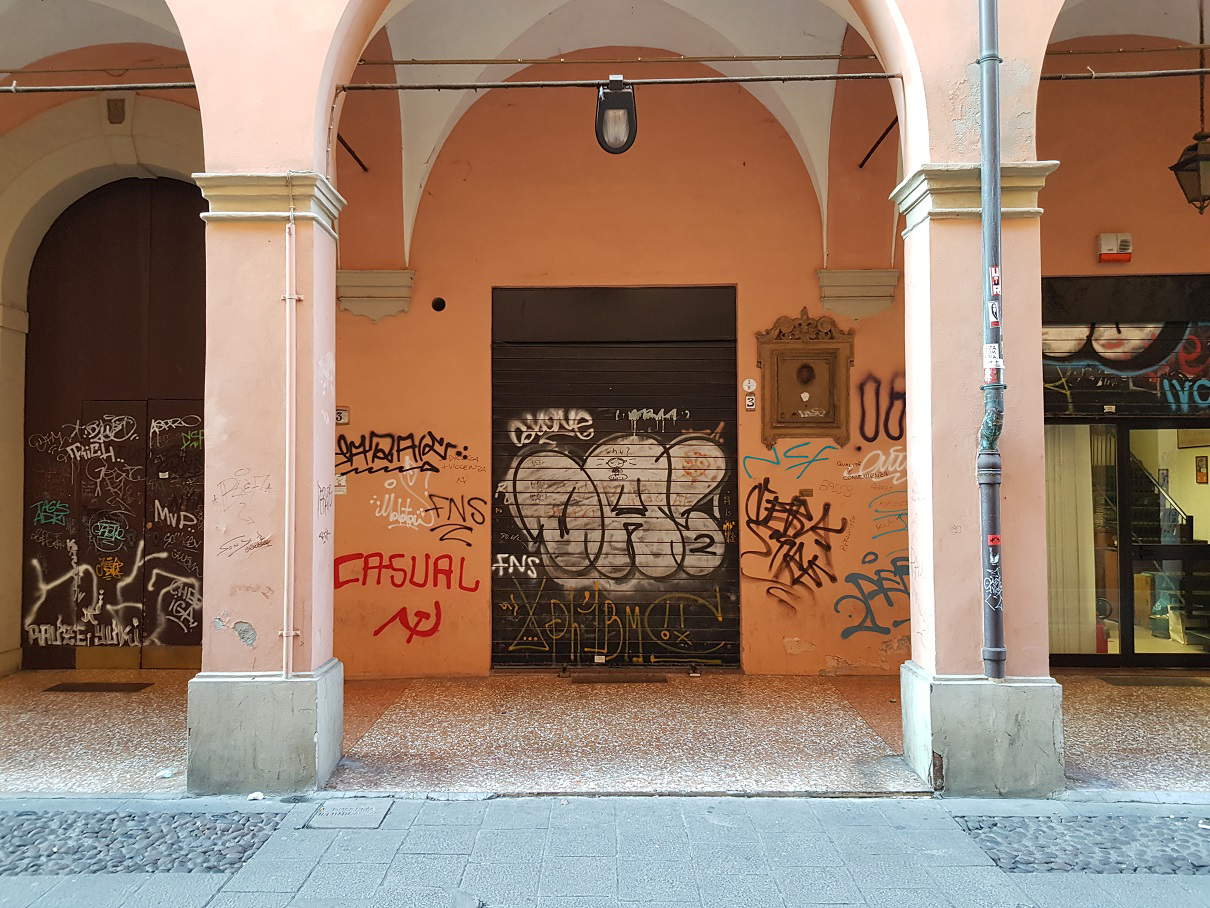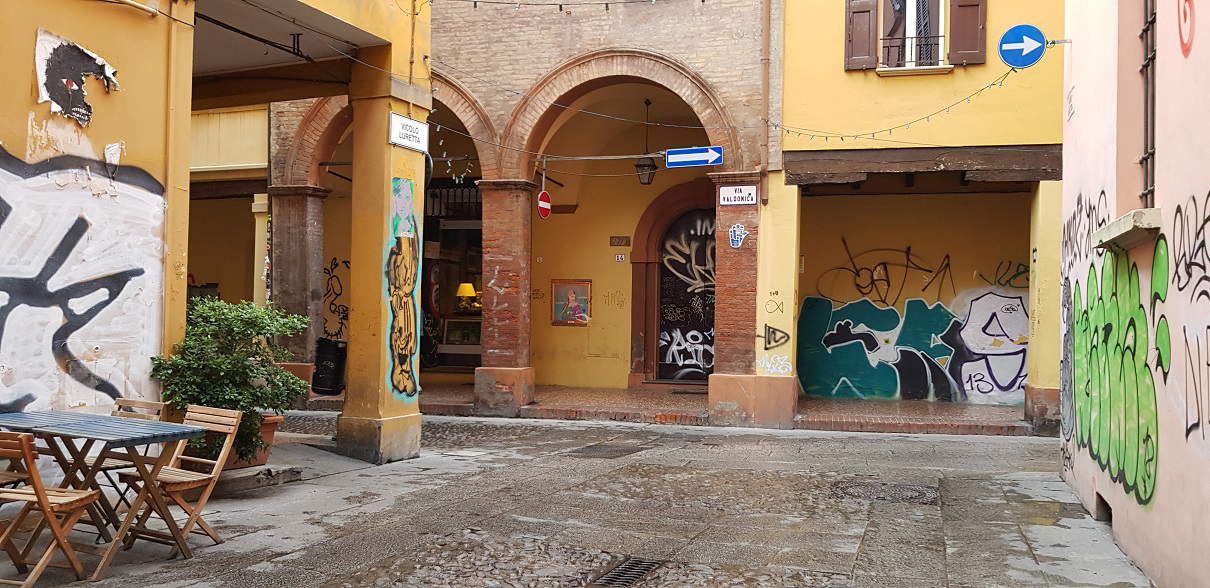It’s a familiar landscape to those who often visit Bologna’s historic center: much of the nearly forty kilometers of the Emilia capital’s porticoes, which became a World Heritage Site in July last year , are prey to decay. Dirt, doors and windows that have been through better times, droppings of various kinds, soiling and assorted graffiti (in a Bologna Today article in 2019, those in Bologna were called “the most soiled walls in Italy”). It is a problem that mainly affects the less frequented areas of the center, although the situation has improved in recent years: many cleaning campaigns have been launched in preparation for Unesco recognition, but the goal was not only to make the city more presentable in the eyes of Unesco inspectors. Also in the Bologna Today article, Councillor for Commerce Alberto Aitini, acknowledging that “defacement is a widespread problem, particularly in the historic center,” focused on reports from tourists and the dangers that laissez-faire entails (“the risk,” Aitini explained, “is to take the writing for granted, to give up and give it to those who defile: that’s why the timing of interventions is crucial, because the sooner you clean, the higher the probability that the wall will remain clean.”).
In May, the Confabitare association promoted a collection of reports (more than 15,000 were received, 10,000 of which were from residents in the historic center) that were then delivered to the mayor of Bologna, Matteo Lepore: during the collection, Confabitare asked citizens to note the degree of perceived insecurity, the reasons for the degradation and the areas of residence. The survey showed that the most degraded area in the historic center, according to citizens, is the university area (thus Via Zamboni and its surroundings), immediately followed by Via Indipendenza and the station area, while the third place on the podium went to the Pratello district. Forty-two percent of citizens’ reports concerned dirt (it is dog waste, according to residents, one of the main problems) and writing left by writers on walls, a problem particularly felt in the university area and, in the suburbs, in the Savena district (less felt, although it concerns 30 percent of the reports, the problem of bivouacs and night clamor, concerning mainly the Pratello and the area around Piazza Verdi).
“Unfortunately, the situation of degradation, in some areas of the city, is really incandescent, the exasperation is unequivocal,” emphasized Alberto Zanni, national president of Confabitare, presenting the results of the collection of reports (which was then followed by a collection of signatures of citizens). “We ask for the mayor’s intervention to prevent the drift, and he can also count on our cooperation.”



 Porticoes of
Porticoes of Porticoes of
Porticoes of Arcades of
Arcades ofThe problem, in essence, is felt and widespread, and since it is a long-standing issue, there is little doubt that it is primarily a cultural and mindset problem. But what is being done to combat it? Beyond regular police checks, many initiatives have been undertaken, including recently, and they are spreading like wildfire throughout the historic center (there is no doubt that compared to even just four or five years ago, Bologna’s Porticoes in 2022 are doing much better). It was last week’s news (June 15) that a memorandum of understanding was signed between the Municipality of Bologna and Confabitare, aimed at collaborating on the redevelopment of sections of Bologna’s Portici that are privately owned but in public use (in keeping with a centuries-old custom typical of Bologna and more generally of the cities of Emilia). The five-year protocol aims to incentivize interventions by the owners of buildings with porticoes by helping them to upgrade them with refurbishment of walls, columns, ceilings, facades, fixtures, and to promote cleaning against soiling. Incentives include free concession of public land for construction sites, exemption from the payment of the fee for authorized advertising installations in construction site areas, and the possibility of using the “I Porticoes of Bologna” logo for actions that fall within this scope. Confabitare, for its part, pledges to promote redevelopment initiatives and activities among its members, coordinate interventions, support owners in the selection of qualified firms, provide reports to the municipality, and have layers of protective paint applied to cleaned surfaces to make any subsequent removal with detergents easier.
In April, the Lepore council approved the “Experimental Plan to Combat Graphic Vandalism,” precisely to prevent soiling of the Bologna Porticoes and in general of all facades in the historic center. The plan in this case will last two years, provides for the allocation of 500 thousand euros for each year (thus one million in all), and will be implemented with cleaning and, above all, easy-to-maintain protection interventions with durable paints. The plan also calls for the identification of procedures and forms of control that will incentivize property owners to keep their facades clean and decent, all in compliance with urban police regulations. The idea is basically to start a virtuous circle between the public and private sectors. “The approved guidelines underline the intention of the Municipal Administration to make an experience that at the moment has no equal in Italy,” said City Maintenance and Cleanliness Councillor Simone Borsari at the launch of the plan. “A working group composed of competent technicians and aldermen is being created with the aim of drawing up a plan that will allow for effective collaboration with private individuals, whose obligations remain unchanged, for the cleaning and maintenance in a state of decorum of the arcades, given their particular legal situation as private structures for public use. This is a courageous act because it addresses complex legal issues and does so in the round, dealing not only with the removal of graphic vandalism but also providing for actions to protect the walls, which, subject to the favorable opinion of the Superintendency, will allow a significant reduction in maintenance costs. Through this plan, it will also be possible to contact a whole range of public and private entities to sign memoranda of understanding to facilitate procedures. It will also be an opportunity to invest in activities to inform, educate and sensitize the citizenry on these issues to enhance the importance of shared care of the city’s heritage.”
But boosting the care of public space also requires more. There are many proposals: for example, an app that allows people to quickly report situations on which to intervene. And then initiatives to make the historic center more livable, since degradation is not just synonymous with dirt, but is a much deeper phenomenon with decidedly ramified roots. In the spring of 2021, the Bosco diffuso project had been launched: an idea born from the initiative of some citizens who, during the first lockdown of the Covid pandemic, had proposed to place pots and plants along the porticos, wherever possible, in order to use the plant element to avert critical situations and degradation. And then, installations of works of art, such as the street art initiative promoted in 2020 by the Cheap Festival collective (but many others are the initiatives in this sense that have developed in the city). In short, Bologna certainly does not lack creativity to combat the most obvious phenomena of degradation.
 |
| Filth and defacement on the Porticoes of Bologna. What initiatives to counter the degradation? |
Warning: the translation into English of the original Italian article was created using automatic tools. We undertake to review all articles, but we do not guarantee the total absence of inaccuracies in the translation due to the program. You can find the original by clicking on the ITA button. If you find any mistake,please contact us.